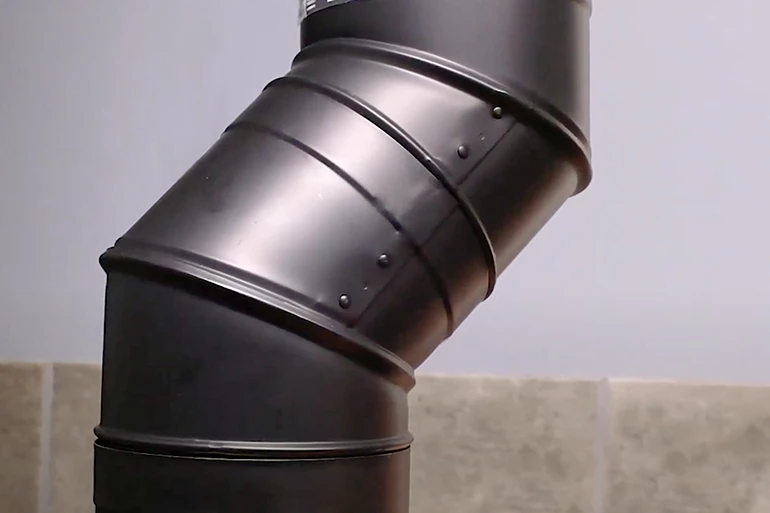What You Need To Know About Stove Pipes And Elbows
Installing venting for a fireplace can be challenging. Especially if you have framing and other objects in the way that require elbows to move around. What is an elbow you might ask? Well, that's exactly what we are going to discuss today.
Elbows are angled pipes that help you maneuver a venting system around objects blocking its path. Elbows can be pivoted to offset in any direction and come in 15, 30, 45 and 90 degree angles, so they fit a variety of situations. While elbows are great for horizontal venting installations, it is not encouraged to use them on vertical installations unless you have to.
Because of the solid particles in wood burning venting systems, offsets are limited to only a maximum of 30 degrees in the U.S. and 45 degrees in Canada. Direct vent and B-vent systems can use up to 90-degree offsets since their venting systems do not have solid particulate that could build up within the turn of the elbow.
Elbows restrict the flow of gases and fumes. When smoke is exiting your fireplace, it is best for it to escape through a straight vent pipe where it doesn't have to run into a wall and make a turn. A 45-degree elbow could be manageable for a vertical installation, though installing a 90-degree elbow is not an option.
It's important to note that while a 90 degree elbow isn't allowed in vertical installs, it is in horizontal ones. You have to have a 90-degree elbow to redirect the vertical run of stovepipe towards a wall. Typical guidelines state that you need at least 12 inches of vertical piping from the stove before you can install an elbow. This length is needed because it gives the stove time to establish a draft before the airflow is restricted by the angle of the elbow.


